Training Days
Cross-country train from New York to Austin is a journey of colorful characters and cramped quarters
Before embarking on train travel in America, it’s best to steel yourself for a spot of roughing it. To get from New York to Austin — covering more than 1,500 miles — meant two nights of fitful sleep squashed in my chair. Nevertheless, despite the cramping and fidgeting, it’s well worth doing for what is revealed.
"What a dump."
The first stage of the journey was aboard the 49 Lake Shore Limited — and it certainly was in terms of momentum — leaving midafternoon from Penn Station, traveling through the bowels of New York and under the Hudson River before emerging into daylight heading west towards Chicago.
Later on, the sun began setting on the train still tracing the picturesque waterways of America’s northeast. During the night, a thunderstorm raged in the distance while the train slipped through small stations, each dimly lit like an Edward Hopper painting.
“What a dump,” the old gentleman sitting beside me said the next morning as the train entered the rusting industrial wasteland on Chicago’s outskirts, rampaging weeds and crumbling buildings like a scene from an apocalypse movie.
Meanwhile in the distance, the 110-story Sears Tower soared into the blue sky, testifying to the great contradictions of poverty and wealth, growth and decay characterizing the American endeavor.
“At least we didn’t hear gunshots,” the man said.
"Biker gangs, wild mustangs, and a classic convertible."
At Chicago’s rather drab Union Station — New York’s elegant Grand Central it ain’t — I changed to the impressive-looking double-decker Texas Eagle Superliner. What a name! But it proved equally slow southwards through Illinois and into Missouri, passing St. Louis’ 630-foot Gateway Arch beside the Mississippi River.
Next, Arkansas and the town of Little Rock, where in September 1957 nine black students enrolled at its formerly all-white Central High School, testing the landmark 1954 U.S. Supreme Court ruling that banned segregation in public schools.
Then into the indomitable Lone Star State with Davy Crockett’s words on my mind: “You may all go to hell, and I will go to Texas!”
In defense of the Amtrak national rail network, its trains can shift, but the even more enormous and sluggish freight trains take priority, leaving passenger trains held at stations and on sidings for up to an hour.
“You may have noticed how we are racing toward Texarkana. We’ve got some freight ahead,” deadpanned one of the train guards over the speaker system during a particularly long hold up.
There is an upside, however, to this general lack of haste and momentum. It allows you to disengage from life’s frantic pulse, and to start noticing and better appreciating the changing landscape of this vast continent and the quintessentially American action: gangs of Harley Davidson bikers barrelling down highways, mustang horses running beside the train, a classic white convertible driven by an elder gent seated next to his blonde paramour.
"Hippo loose in Hutto."
After another beleaguered night in my chair, another dawn — and new hope: “Come to the dining car where the fresh coffee is ready,” announced the train’s speaker system.
At the breakfast table I was joined by a septuagenarian amateur artist who elaborated on Australian impressionism as I tucked into my scrambled eggs, sausage, and Southern-style biscuit.
You can meet plenty of other people if you wish (you have ample time), such as the gold prospector returning home (yes, people are still prospecting. I was just as surprised).
Increasingly, I retreated to the train's second-floor viewing lounge to stretch my legs under the Perspex-bubble roof and watch rural Texas slide by.
In the afternoon, a National Parks volunteer materialized to point out such things as the town of McGregor where Elon Musk’s SpaceX does its rocket testing, and a solitary house where they filmed the iconic horror film The Texas Chainsaw Massacre.
Going through the town of Hutto, the volunteer had children counting how many hippo statues they could see next to banks and fast food outlets. In 1915, a circus train stopped in the town and a hippo escaped, resulting in the hurried yet memorable telegram: “STOP TRAINS, HIPPO LOOSE IN HUTTO.” It's been the town's mascot ever since.
The small town of Crawford beside the tracks was unknown until George W. Bush became president. Afterwards, Crawford became known as the Western White House and a regular dateline in newspapers.
“Now we’re passing through Taylor,” the loudspeaker announced, “home of legendary black cowboy Bill Pickett.” “Yeah!” shouted an African-American lady seated a couple of tables away from me.
Eventually the scenery running beside the track began to look more and more familiar, as memories of yesteryear in Austin were stirred, and I felt a strange sensation somewhere in my chest.
I emerged squinting into the late afternoon sunlight at Austin Station, more unkempt than when I started, and decidedly tipsy. The beers and gin and tonics sold beneath the viewing lounge had proved too hard to resist — and they made the commentary even more interesting.
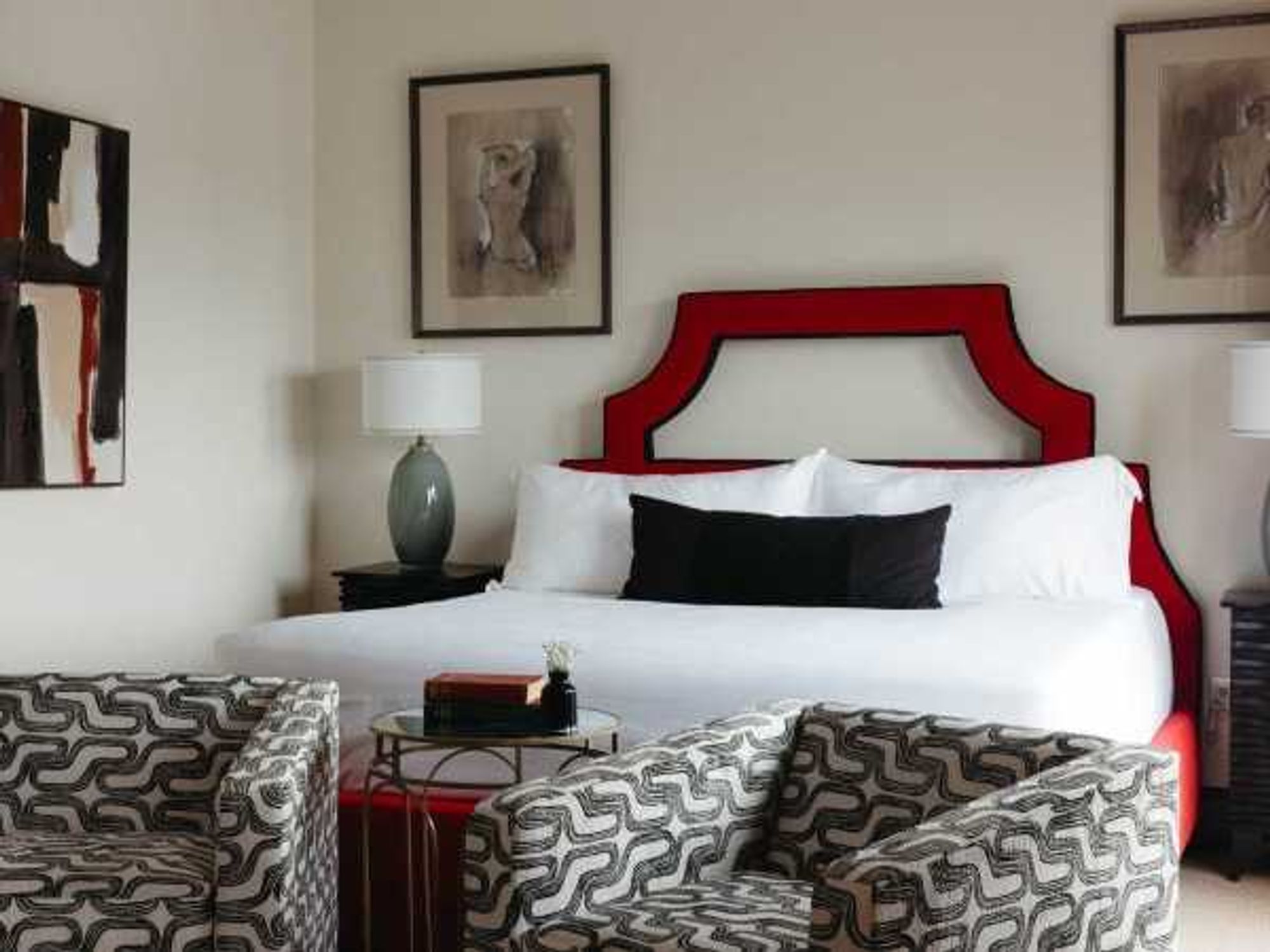
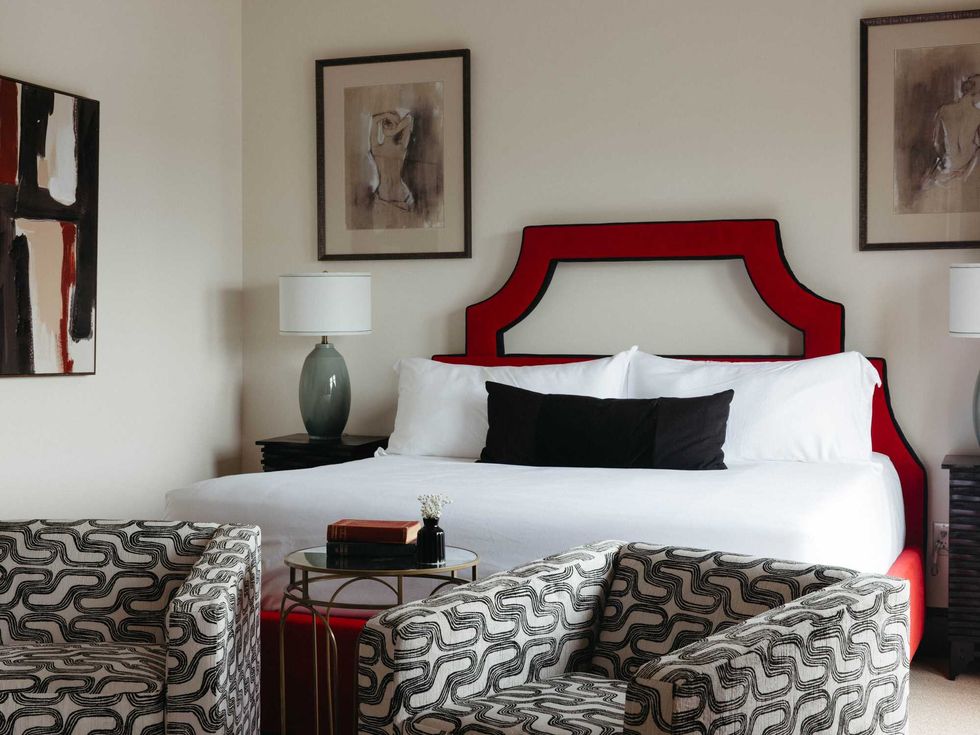

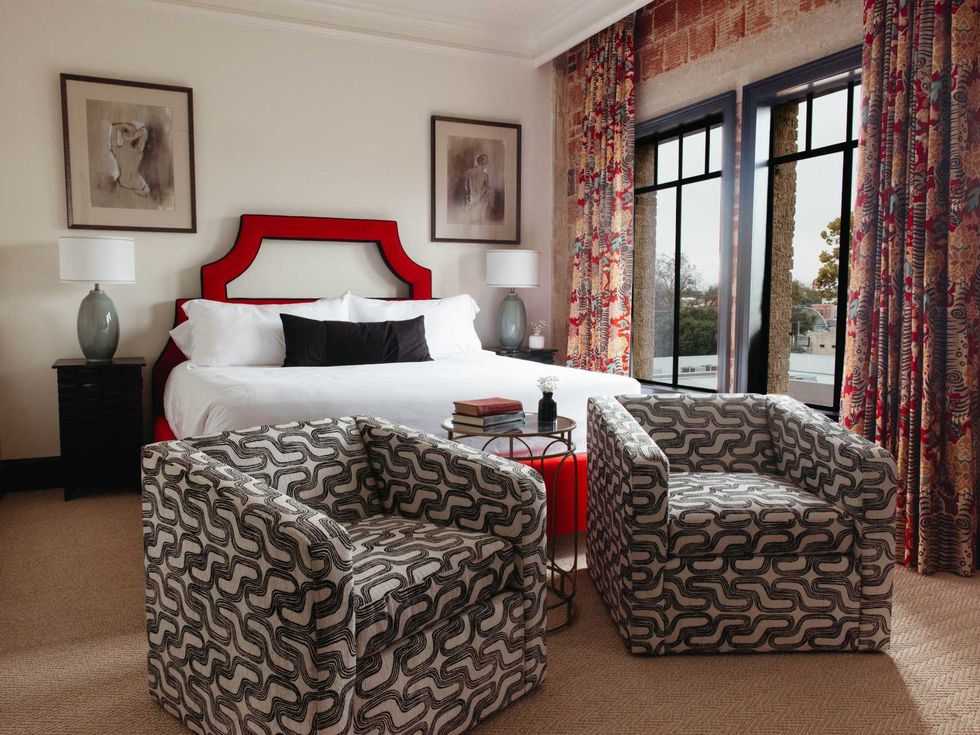
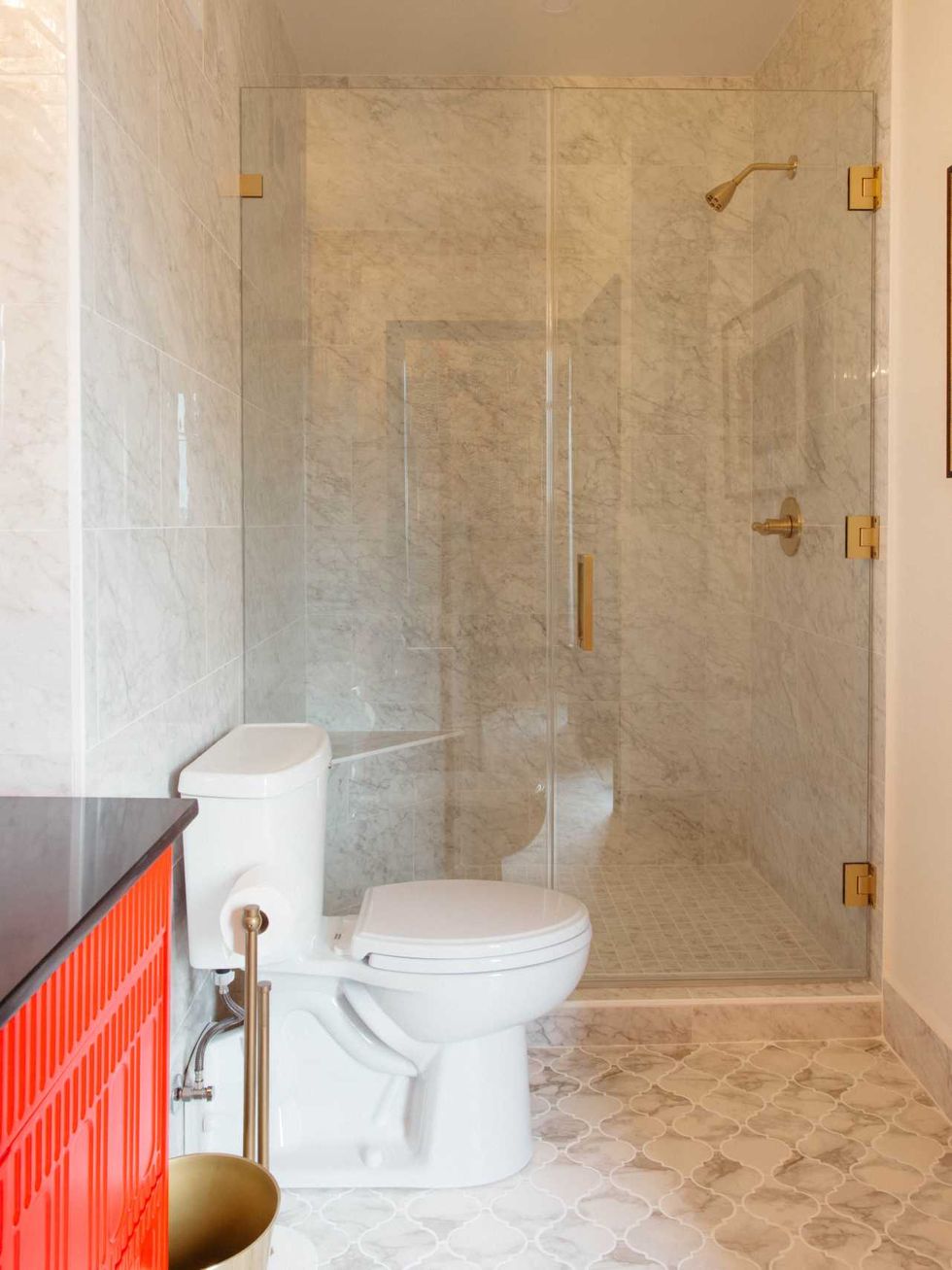
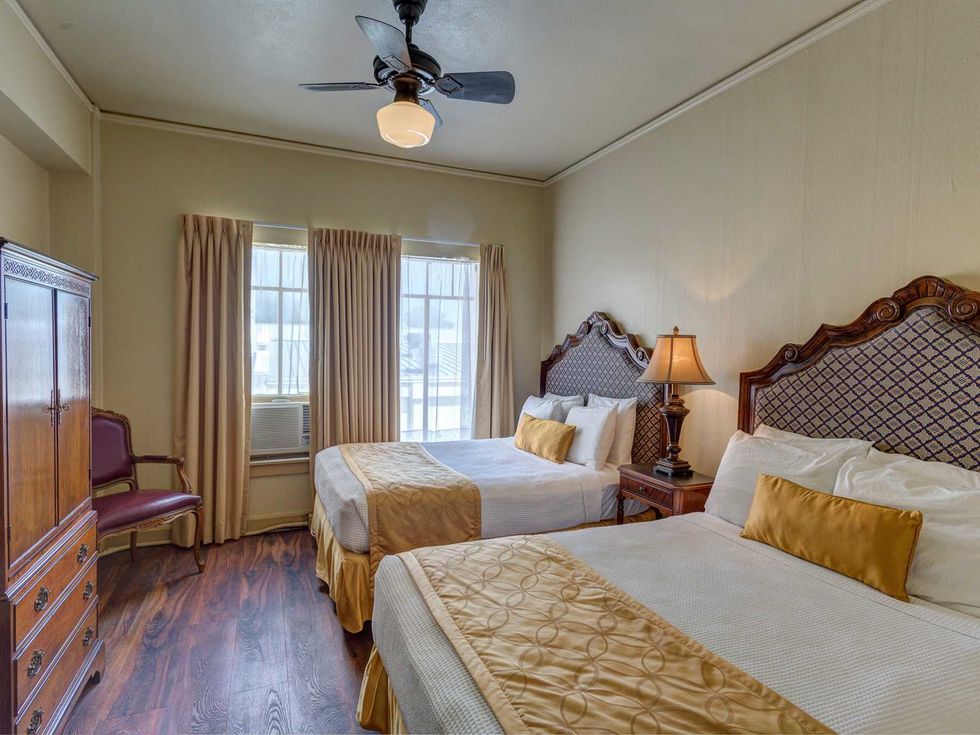
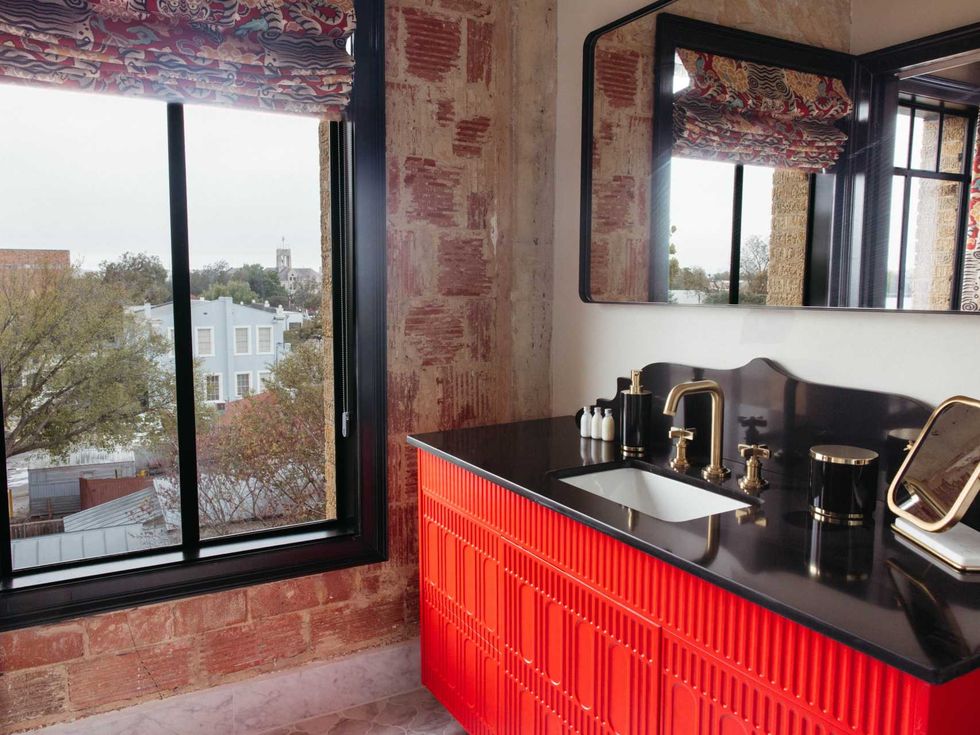 The bathroom's color scheme is a subtle nod to 1920s Art Deco.Photo by Garrett Smith/Giant Noise Partners
The bathroom's color scheme is a subtle nod to 1920s Art Deco.Photo by Garrett Smith/Giant Noise Partners